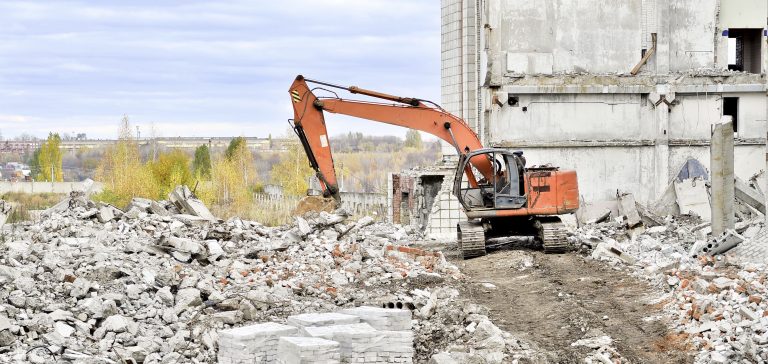Home > How Wastage Control Impacts Infrastructure Projects & What You Can Do About It

How Wastage Control Impacts Infrastructure Projects & What You Can Do About It
The vegetation, plasterboard, bricks, asbestos, contaminated soil, and other construction waste produced on building projects is attributed to around 30% of the total weight of the building materials.
In the US and UK alone, around 670 million tonnes of demolition and construction waste is generated on an annual basis.
Understanding the causes of wastage and how to best handle them increases project efficiency, keeps projects in line with national standards, and helps to avoid hefty fines, penalties, and criminal charges.
What is Construction Waste?
There are six main categories of construction waste:
- Design source
- Procurement source
- Handling of materials source
- Operation source
- Residual source
- Other sources
The quantity of construction waste generated from any specific project varies depending on the project’s circumstances and types of materials used.
Did you know that across the world, 3 billion tonnes of construction and demolition waste is produced annually?
A solution, according to researcher Dr.Salah M. El-Haggar PE, PhD, is to create and execute a waste management strategy that’s sustainable, where the amount and the types of waste can be managed throughout the building’s entire lifecycle — from the planning phase to the architectural and structural design phases to the construction phase and to the in-use phase.
Why Recycle Construction Waste?
Construction and demolition waste represents 40% of the waste that end up in the landfill. Over 75% of this can be recycled as it is clean, excavated material. This is in the form of concrete, bricks, and timber.
Here are key reasons why it’s crucial to recycle construction wastage, according to Sustainability Victoria:
- To minimise the amount of raw materials extracted from the environment
- To minimise air and water pollution as a result of the extraction and processing of raw materials
- To reduce landfill
The way that waste is recycled varies depending on the materials that are being produced and the municipality in which the recycling is done. Reach out to your local council to see exactly which materials can be recycled as well.
What Are the Effects of Wastage?
Research suggests that almost one-fourth of the country’s greenhouse emissions are from buildings and their users. With skyrocketing population growth rates, our efforts of achieving the goal of zero net emissions by 2050 seems very ambitious.
The energy in Australia’s existing building stock is equivalent to ten years of the nation’s energy consumption. Construction materials and design principles implemented have a significant impact on the energy required to construct a building.
According to research on embodied energy of building materials, “Embodied energy is one measure of the environmental impact of construction and of the effectiveness of recycling, particularly for CO2 emissions.”
The embodied energy of a building is over 30x the annual operating energy of office buildings. Making buildings more energy efficient usually requires more embodied energy, thus increasing the ratio even further (CSIRO Material Science and Engineering, 2009).
Most of the country’s solid waste ends up in landfills; however, since the 1990s, the number of landfills in Australia has decreased. With around 19 million tonne of waste coming from construction and demolition, this increases the burden on landfill sites.
In addition, if the waste is not managed properly, materials such as solvents and chemically treated woods can cause soil and water pollution.
How to Reduce Waste
- Prepare and implement a waste management plan.
Identify the types of waste you will generate and create an action plan for each category of waste, including how to ensure that the waste is transported and disposed of legally.
It’s also crucial for management to be clear on everyone’s roles and responsibilities when it comes to waste management and at a minimum ensure environmental and sustainability plans and polices are in place as well as adhered too.
- Reduce total waste quantity.
Opt for efficient and lean designs to ensure minimum waste production. With that, plan and order the right quantities of construction materials. You can also reduce construction waste by using standard sizes and quantities of materials.
Practise just-in-time delivery to avoid waste from bad storage. Also, storage areas should be weather-resistant and secure.
- Repurpose and recycle.
Don’t waste extra resources so you can reduce your environmental impact. Repurpose bricks, tiles, concrete, soils, wood, stones, asphalt paving, paint, pallets, plasterboard, glass, and packaging.
At Antoun, we’re always thinking of ways to repurpose as many materials as we can. An example of this is crushing of damaged road pavement and using it as a road base, which we’ve done for many projects, including for the 2000 Olympic precinct.
To successfully recycle, waste segregation is key. Assign different containers for different materials, or you can also partner with a waste company to manage your construction waste.
- Employ the right resources.
Our Rapid Set® cement gives you up to 30% carbon reduction during the manufacturing process of BCSA Cement. We also reduce emissions by producing Rapid Set® concrete on-demand, on-site, using less fuels than a traditional mixing process.
On-site concrete supply production via Volumetric Mixers ensures that only what is required is produced, reducing waste from oversupply. There is also no need to take any overage back to the manufacturer, landfill, or a registered facility.
Construction has a huge contribution to wastage globally. Ensure you take the right steps to minimise the impact on the environment.
Sign up to the Antoun Newsletter today for the latest industry insights.
 Call
Call